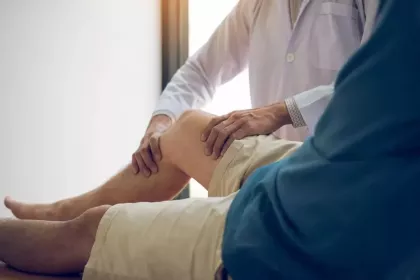What Bracing Can Do for You

Physical injuries are quite common, affecting 55.4 million people and leading to over 200,000 preventable deaths and over a billion dollars in medical costs. Whether it happens at work, school, or in your home, millions of people struggle with the pain, swelling, and mobility problems associated with an injury.
Recovering from your injuries can be managed with many treatments, depending on the type and severity. If you live in the Medford or Grants Pass, Oregon, area and you’re hurting from an injury, the extensive team of physicians at Southern Oregon Orthopedics have treatment options that can help.
A common solution for mobility problems as well as fractures or strains is the use of braces and splints. Let’s explore their uses by examining what orthopedic braces are, what they can be used to treat, and the types of braces you can use.
Understanding orthopedic bracing
This is the general term used for several types of supports that limit mobility so your injury can heal properly. Braces are made of soft or rigid materials, depending on what they’re being used for and how severe your injury is, including tightly knit fabrics, spandex, plastic, or metal. Braces are used to help stabilize and heal your hands, wrists, shoulders, elbows, knees, legs, and ankles.
Reasons to use a brace
There are many advantages to using a brace:
Alleviating weight on an injury
Often, when you have an injury that hurts enough to affect your movement, limiting the amount of weight you put on it can help prevent further damage and allow things to heal faster.
Stabilizing limbs and joints
Injuries can also make using limbs harder and alter the way you move, which can affect how stable you are when trying to get around on your own. Braces are designed to stabilize injured joints and limbs (such as your knees and ankles) to make walking or standing easier while the bone or soft tissue recovers.
Reducing mobility to promote healing
If your injured area is swollen and makes it harder for you to flex or move, trying to extend beyond that limited reach can be painful and make your situation worse. Even if there’s no swelling, trying to extend your range of motion beyond the pain threshold of your injured limb or joint can further damage it. Braces help to limit motion within a manageable range while your body heals.
Types of braces
Bracing procedures depend on the specific damage to your limb or joint, and whether a standard, premade brace or one that’s custom-made to manage your particular problem is best for your injury. A part of this assessment process also involves determining whether soft or rigid materials are best for bracing your injury.
Minor to moderate injuries can usually be handled with premade braces, but more severe conditions, or if there’s significant swelling or structural issues (due to extent of injury, body type, or specific area of damage) may need to have custom work done. This can be handled through our in-house bracing center.
So if you’re struggling because of damage to your limbs or joints, bracing may be just what the doctor ordered. To get relief from your pain and start healing properly, make an appointment with our team at Southern Oregon Orthopedics today. Call our office most convenient to you or schedule your visit online.